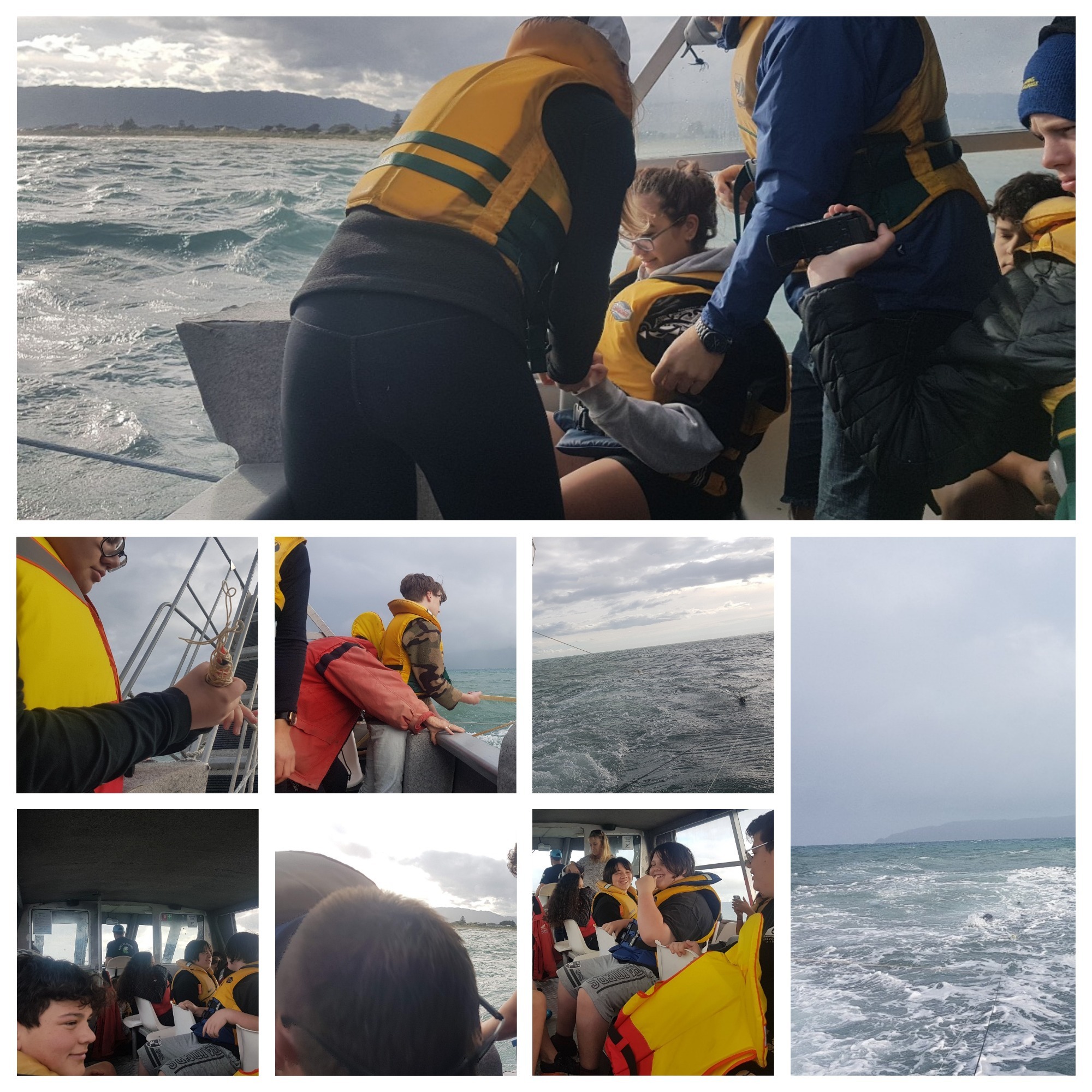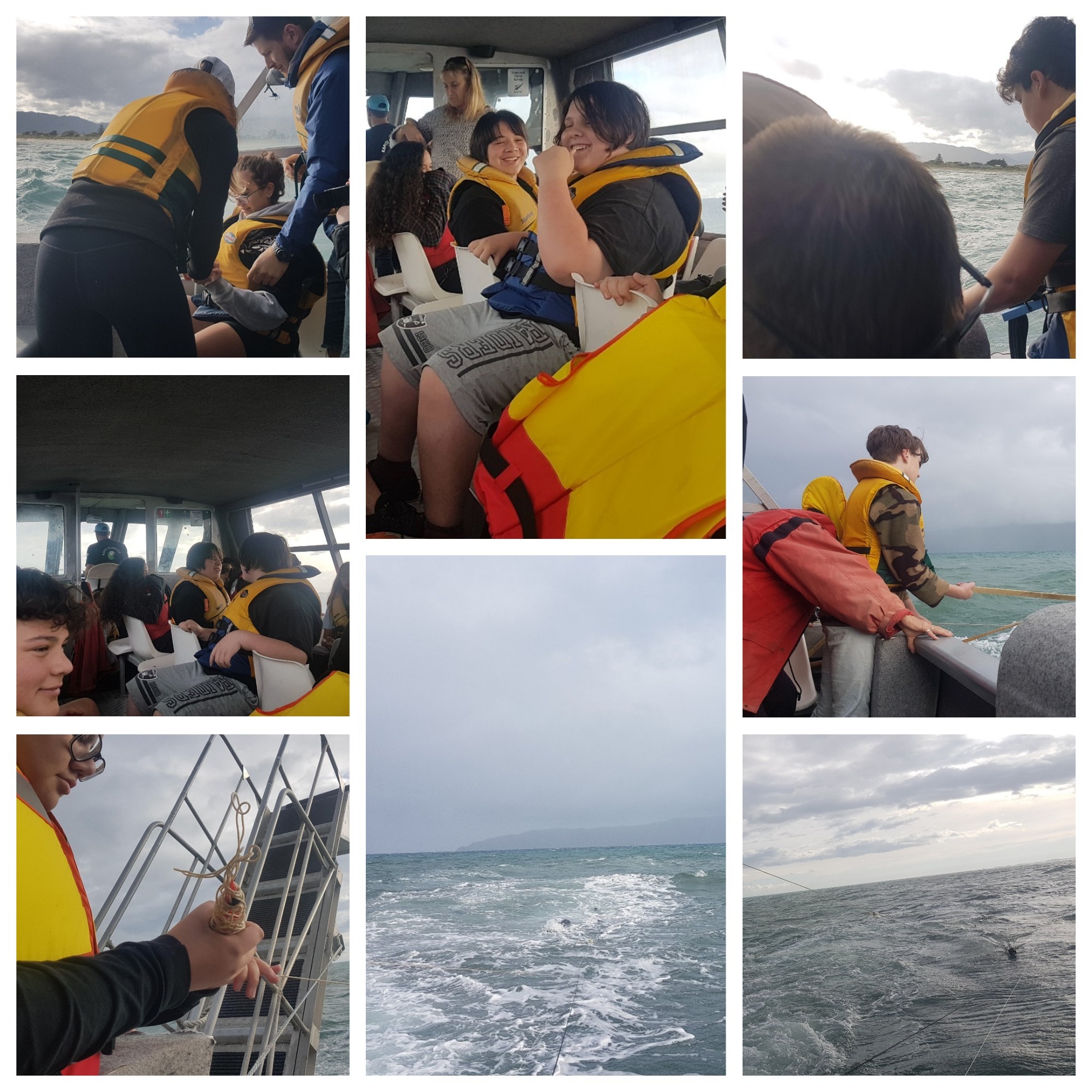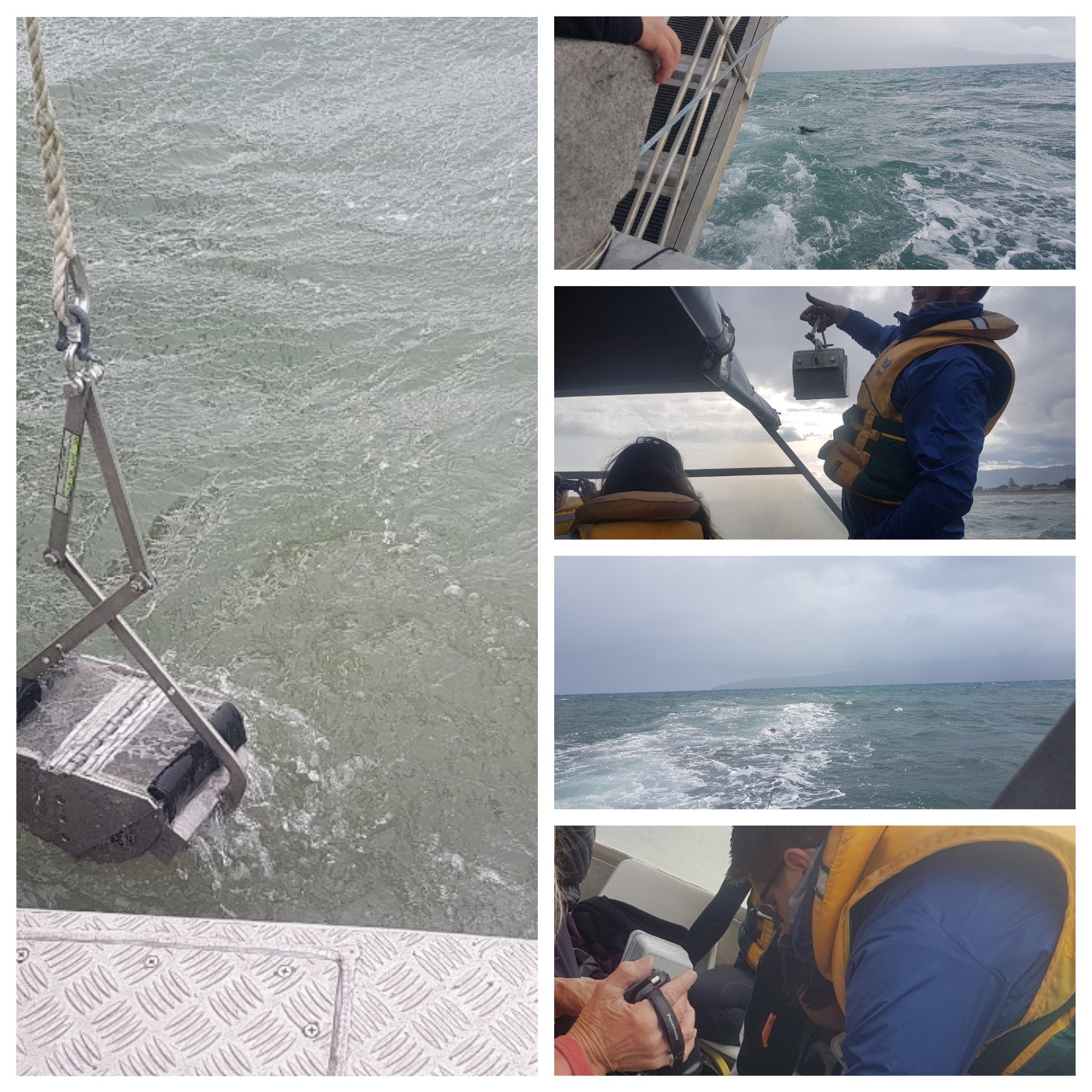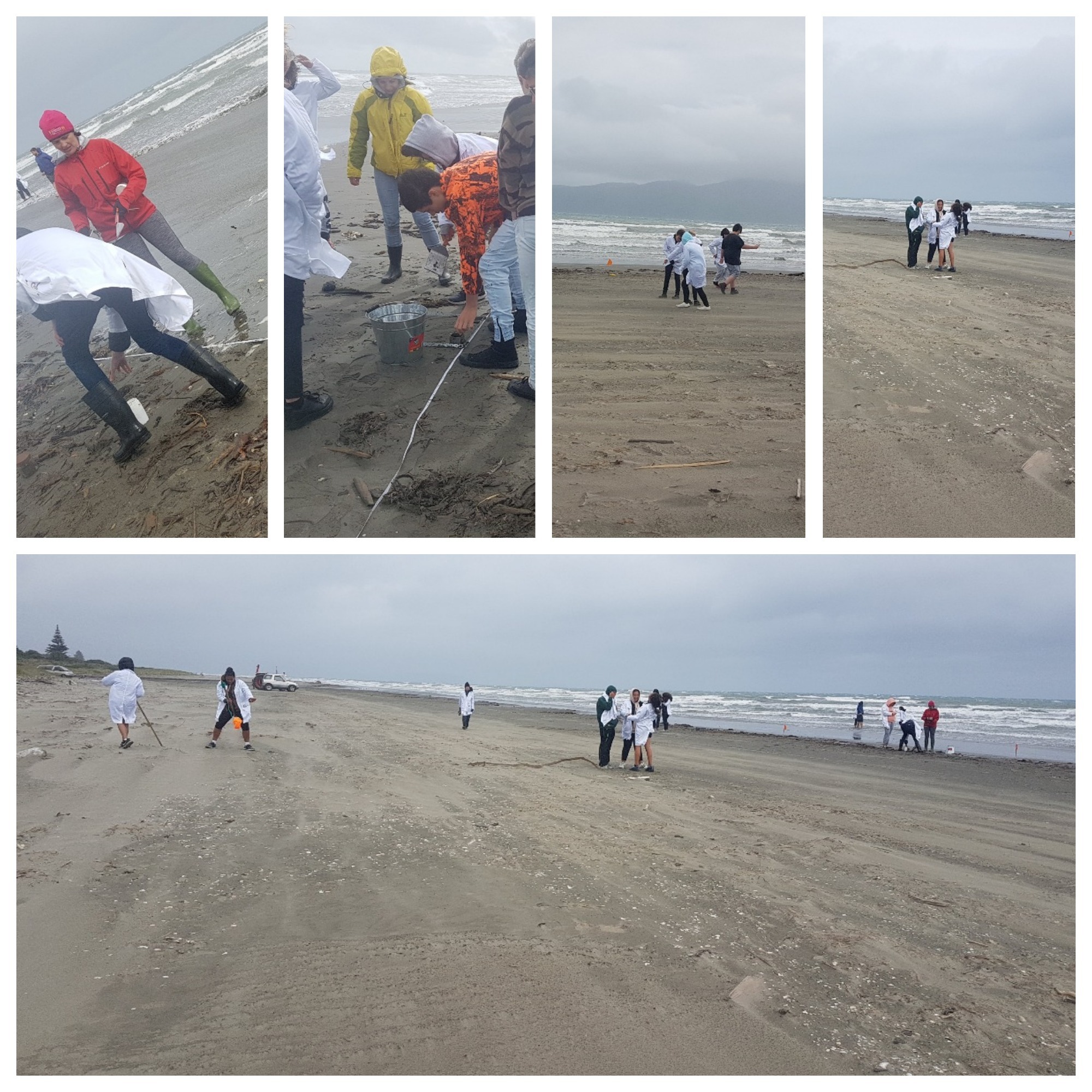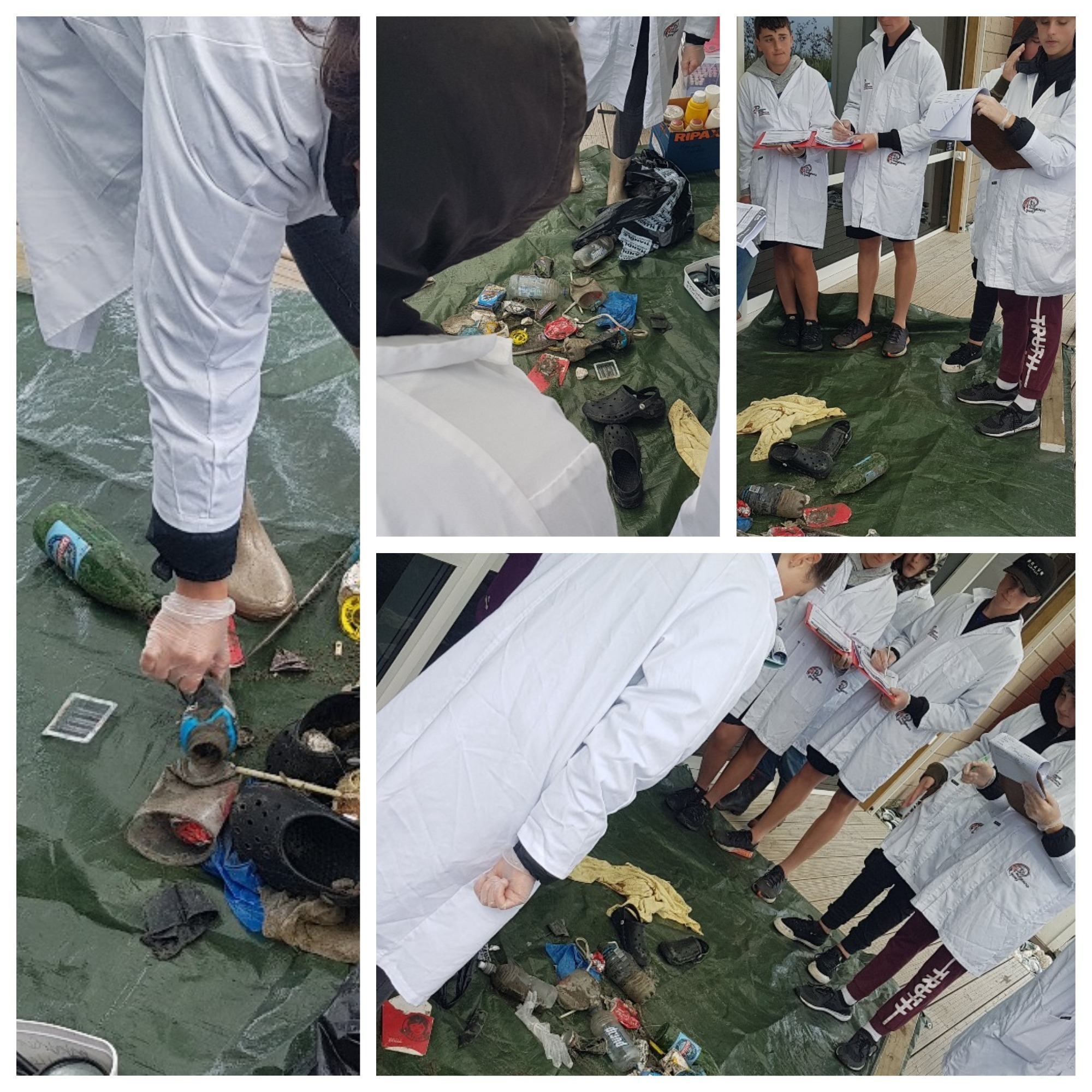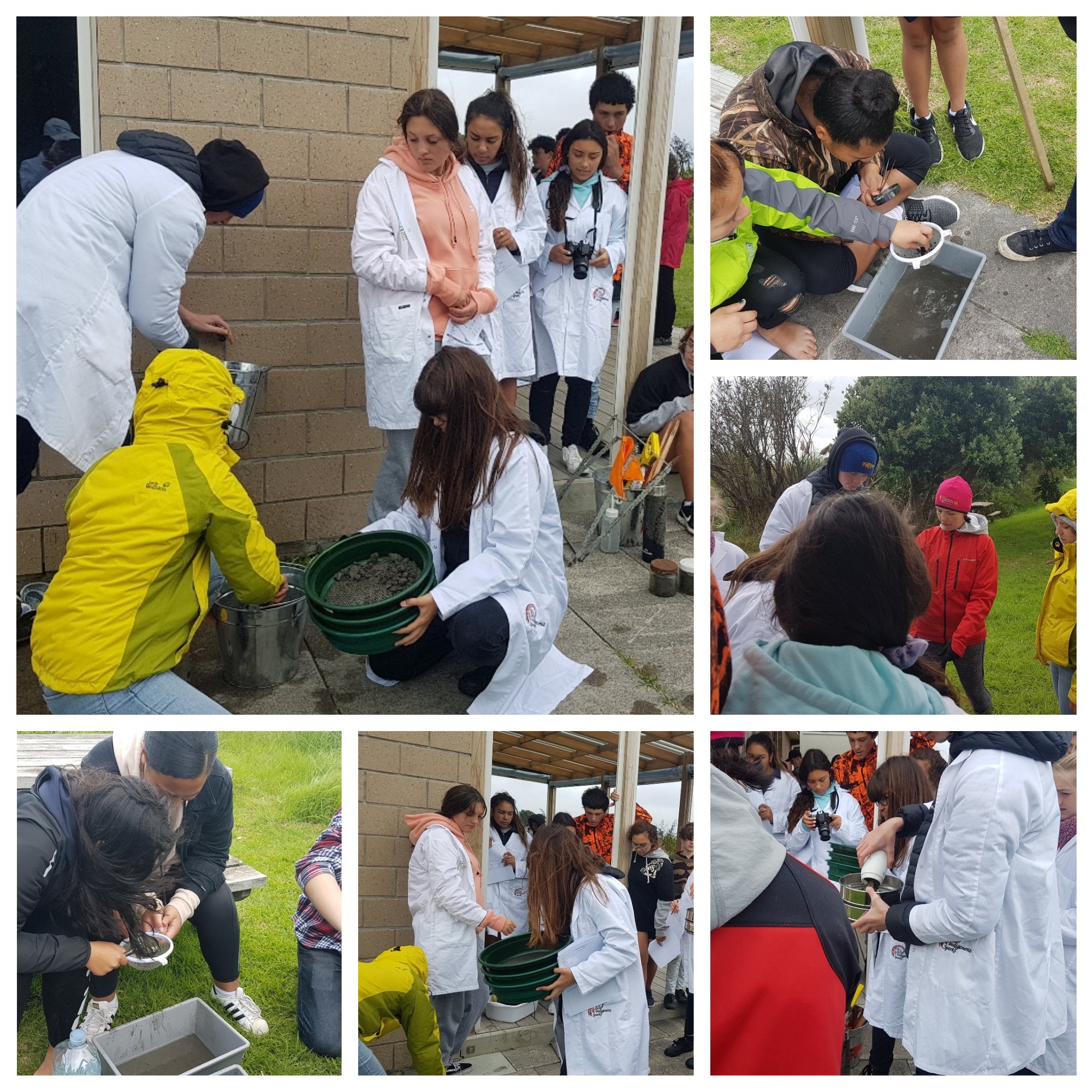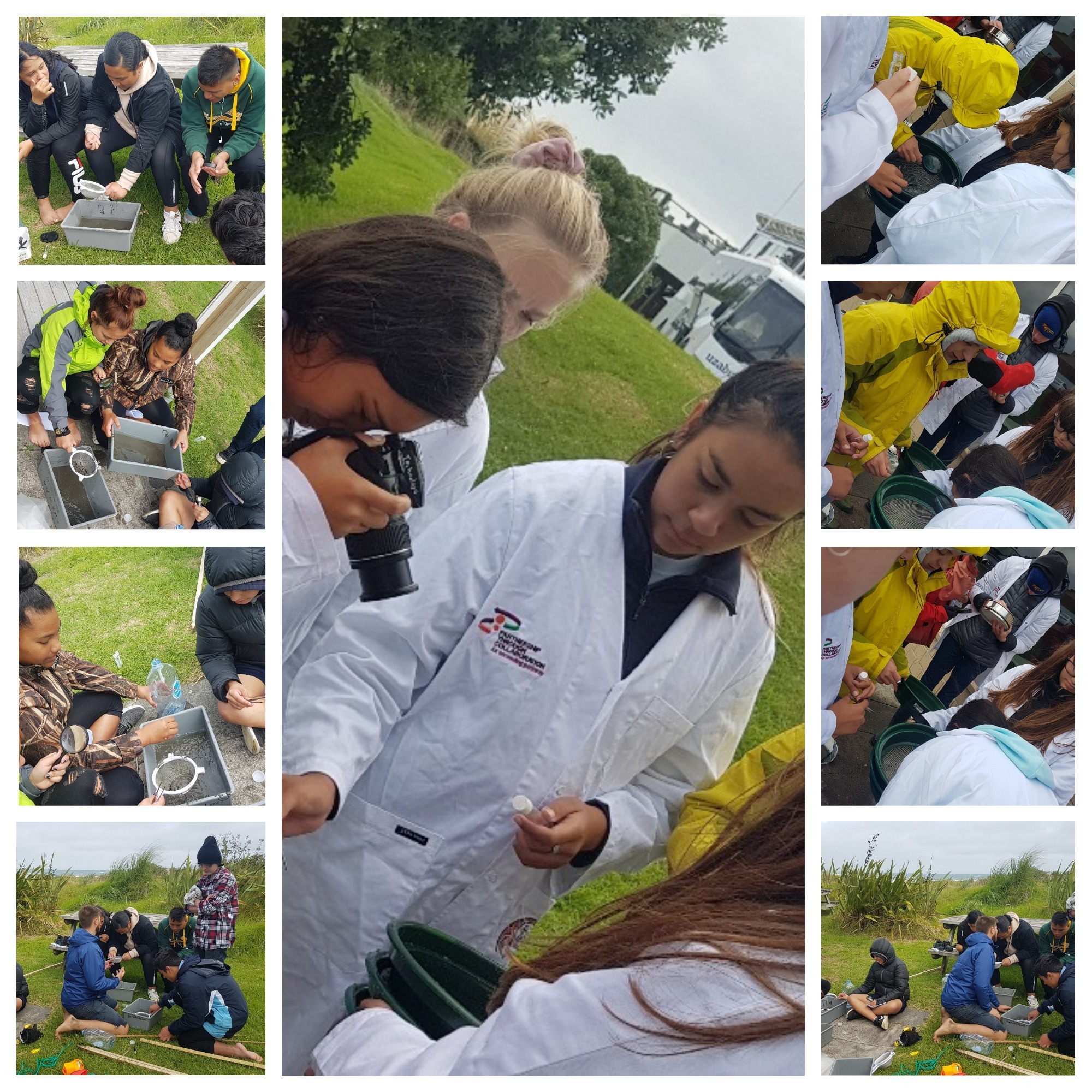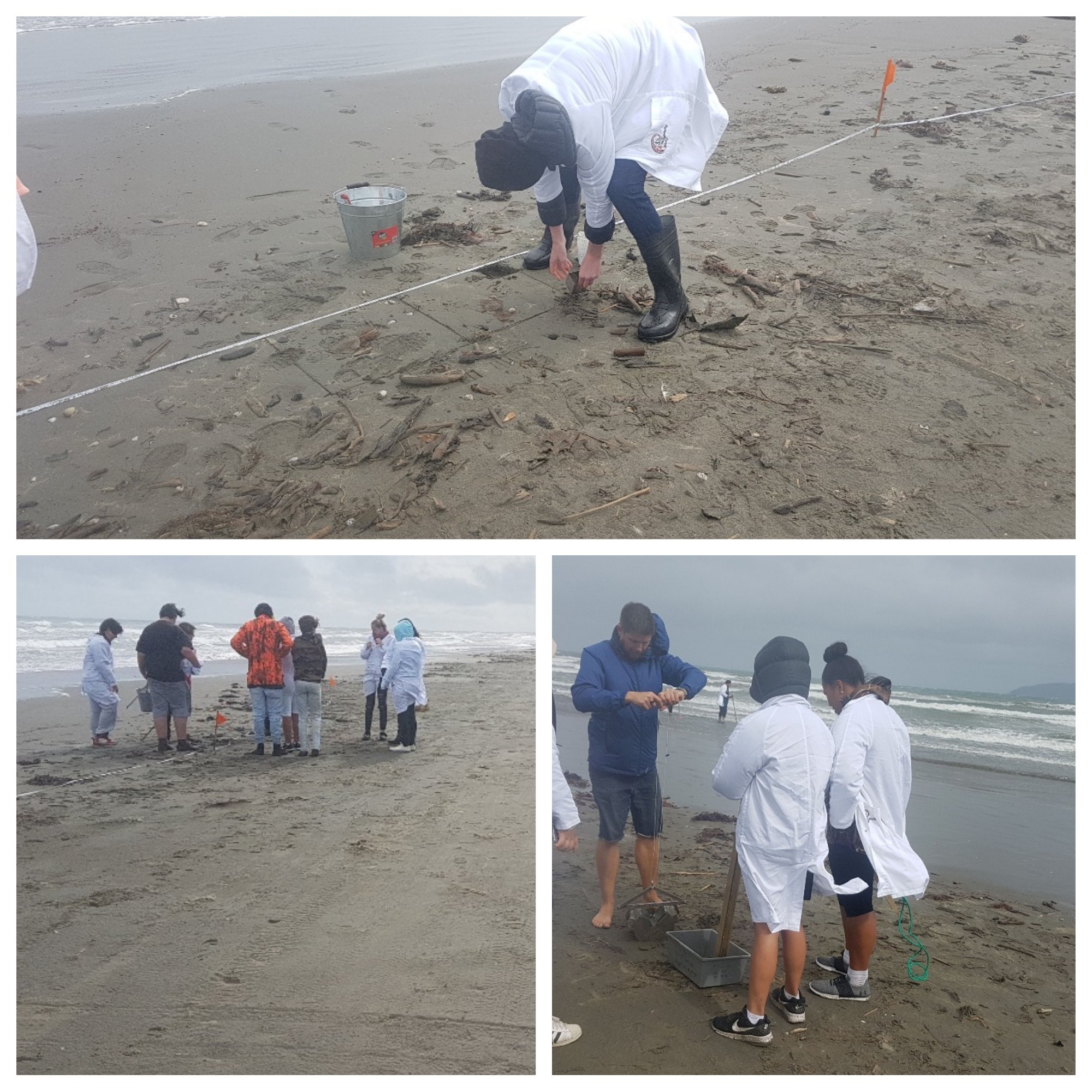Microplastics beach analysis-Paraparamu region
Horowhenua and Lower Hutt students joined forces with Dr Pantos and Dr Hollaus to explore microplastics at Paraparaumu beach, through PTC’s Indigenous Sparks™ program. Braving and enduring the windy, wild Wellington weather, students trawled the ocean amidst the choppy seas; collected macroplastics and sampled the beach sand - all in an attempt to determine the presence or absence of these microbeads.
Dr Pantos with rangatahi in Indigenous Sparks
It was a privilege to have the ESR team with us for this day trip. Olga explained that there is a concern that microplastics are a serious form of contamination to human health. Our ESR scientist has been awarded more than $12.5 million in government funding to continue her research on the impact of microplastics and the threat to New Zealand’s ecosystems, animals and people.
Olga’s research assesses the risk that microplastics can hold for NZ given that our coastal and freshwater environments were shown to be contaminated.
Ingestion via contaminated seafood is one significant concern, however, microplastics have also recently been shown to be present in drinking water. There is, therefore, a growing need to understand the sources, and routes of microplastic contamination, environmental levels, the uptake rate by different species, and the impacts they have on both the animals, their ecosystems, as well as the potential risks to human health.
She shared that recent research found that when glitter used in craft is washed down the sink, it goes into the storm drains. Eventually, they'll travel into the ocean. Dr Trisia Farrelly, Massey University currently researches this and has affirmed that glitter, in particular, is everywhere.
Due to the extensive use of plastics in our day-to-day lives, it is often difficult to accurately measure the extent of microplastic pollution due to the cross-contamination of samples. ESR has therefore teamed up with the University of Canterbury to modify testing methods so that a more rigorous measure of assessment can be applied.
Dr Pantos continues researching microplastic impacts across NZ. 1 NEWS reports from Lyttelton Harbour, where Dr Pantos and team are sampling polyethylene and nylon in the water and monitoring them closely for distinct changes.


